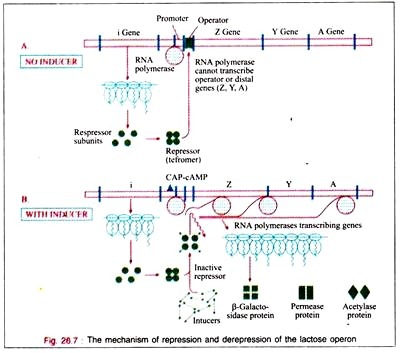ADVERTISEMENTS:
The below mentioned article includes a list of three experiments on permeability.
1. Experiment to study the rates of penetration (permeability) of various organic solvents into living epidermal cells:
Requirements:
Onion bulbs, slides, cover slip, microscope, water, stop watch, glucose, sucrose, glycerol, methyl alcohol, tertiary butyl alcohol (TBA).
ADVERTISEMENTS:
Method:
1. Take an onion bulb and peel off a large segment of the inner epidermis of its leaf.
2. Cut the epidermal segment into small pieces, and place a piece of the epidermis in a few drops of each of the six 2M solutions of glycerol, glucose, methyl alcohol, ethylene glycol, sucrose and tertiary butyl alcohol or TBA.
3. Put the cover slip on each solvent immediately and observe.
ADVERTISEMENTS:
Observations:
Observe each slide very carefully for some time under microscope. Plasmolysis will start. Record the time required for complete plasmolysis in each solution with the help of a stop watch. Now place a few drops of water on each epidermal segment and observe for about 15 minutes until the cells in the epidermal segments are completely deplasmolysed. Also record the time required for deplasmolysis with the help of stop watch.
Results:
Time of deplasmolysis in each epidermal segment depicts the rate of penetration or permeability of plasma membrane in different concentrations of organic solvents.
Record your data in the form of following table:
2. Experiment to study the permeability of living tissues using different concentrations of organic solvents:
Requirements:
Leaves of Rhoeo discolor, distilled water; 0.025 N solutions of KOH, NH4OH, HCl , CH3COOH; watch glasses, beet root, beakers NaCl (4%), CaCl2 (0.2%), 1 M glycerol, stop watch, slide, microscope.
ADVERTISEMENTS:
Method and observations:
1. Take a leaf of Rhoeo discolor (or any other tissue containing anthocyanin pigment) and peel off its lower epidermis. Put the epidermal peels in distilled water.
2. Prepare 0.025 N solutions of KOH, NH4OH, HCl and CH3COOH and take small quantity of each of them in four separate watch glasses.
3. In a fifth watch glass, take some distilled water, and treat it as control.
ADVERTISEMENTS:
4. Place 2 strips of epidermal peel in distilled water, 2 in 0.025 N KOH and 6 in 0.025 N NH4OH solution. Blue colour develops in the epidermal peels kept in alkali. With the help of the stop watch, note the time taken for the development of the blue colour.
5. Now rinse all the 6 peelings kept in 0.025 N NH4OHsolution after they turn blue, and put 2 of them in acetic acid, 2 in HCl and 2 in distilled water.
Now again start the stop watch and note the time taken for change in colour in each of the above- mentioned cases.
Repeat the above procedures 3-4 times to find out the average time taken for change of colour in the acid-alkali transfers.
ADVERTISEMENTS:
6. Now take 4 beakers, put 50 ml of one of the following solutions in each of them and put in each of them some slices of beet root (or any other plant material containing anthocyanin, e.g., petals, red onion leaves, red cabbage, etc.):
(i) Distilled water.
(ii) 25 ml each of NaCl (4%) and distilled water.
(iii) 25 ml each of CaCl2 (0.2%) and distilled water.
ADVERTISEMENTS:
(iv) 25 ml each of NaCl (4%) and CaCl2 (0.2%) solutions.
7. Keep on stirring the beet root (or other plant material used) for one hour in each solution, and record the intensity of colour in each case after one hour.
8. Also note the time taken to plasmolysis the cells of the epidermal peels of Rhoeo discolor in 1 M glycerol on a slide under microscope, and also record the same when they are placed in distilled water after the previous solution has been thoroughly rinsed. Time required for deplasmolysis can also be noted.
ADVERTISEMENTS:
9. Repeat the experiment with 0.1 M or other weaker solutions of glycerol or other organic substances and rate the time taken for plasmolysis and deplasmolysis.
Result:
ADVERTISEMENTS:
Permeability of living tissues is different in different concentrations of organic solvents.
3. Experiment to study the effect of temperature on permeability of plasma membrane:
Requirements:
Fresh root of red beet, cork borer, distilled water, oven, test tubes.
Method:
1. Take a fresh root of red beet and remove about a dozen 4 cm pieces of 1 cm bore with the help of a cork borer.
2. Rinse all these red beet pieces with water and place them in a beaker containing distilled water.
ADVERTISEMENTS:
3. Now immerse one piece each in hot water maintained at 100°C, 80°C, 70°C, 60°C, 50°C and 40°C for exactly one minute and transfer each of them separately into separate test tubes containing 10 ml of distilled water.
4. Keep one piece in a separate test tube containing distilled water at room temperature. This will work as a control.
5. Wait for one hour and compare the relative amounts of pigments which diffuse out from each of the seven pieces of red beet root placed in hot water at different temperatures with the one which has been placed at room temperature.
Observations:
In each test tube the colour of distilled water is different. It is most dark red in the test tube containing the boiling water, i.e., at 100°C, and darkness of red colour decreases at lower temperatures.
Result:
This shows that there is a definite effect of temperature on permeability of plasma membrane.


